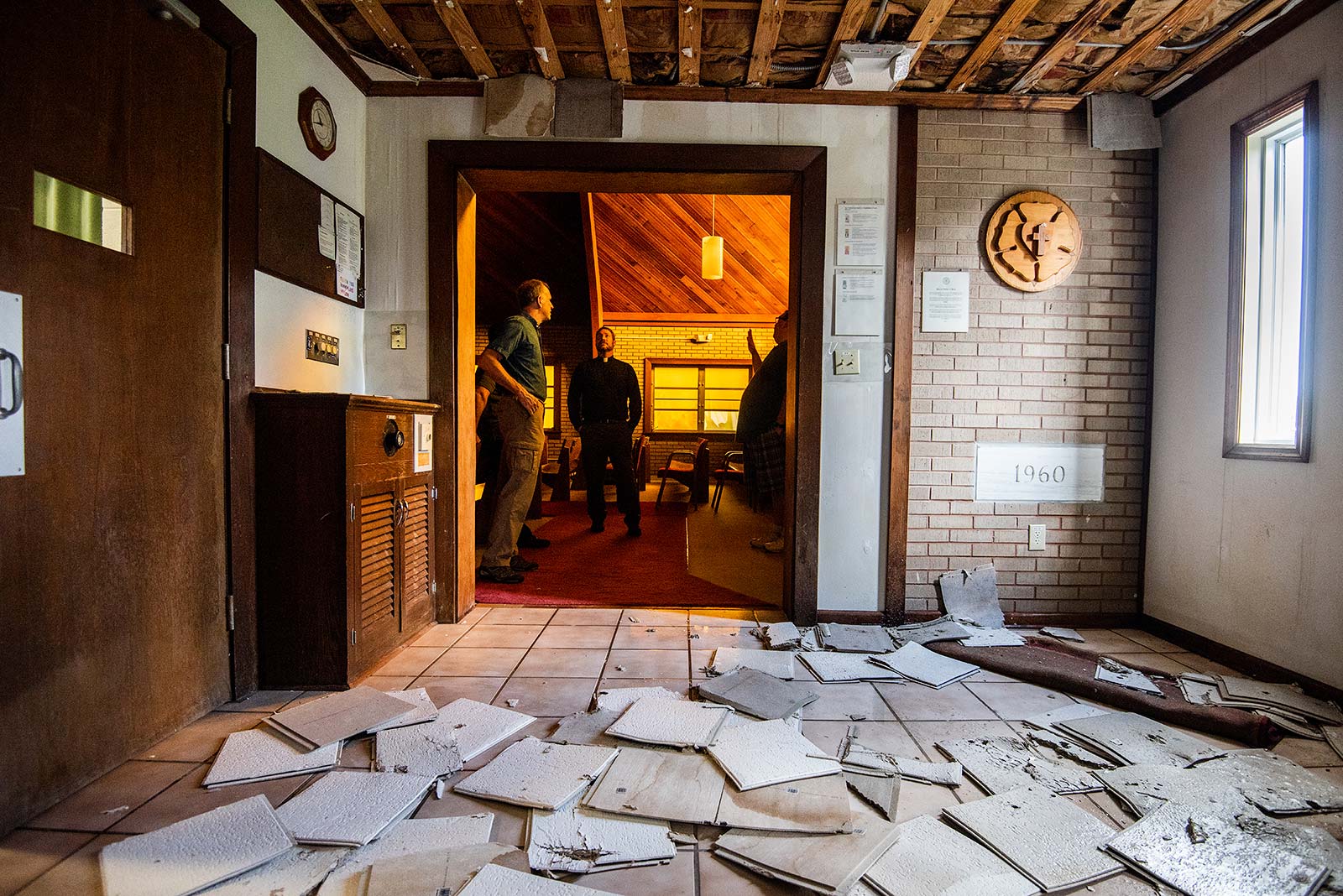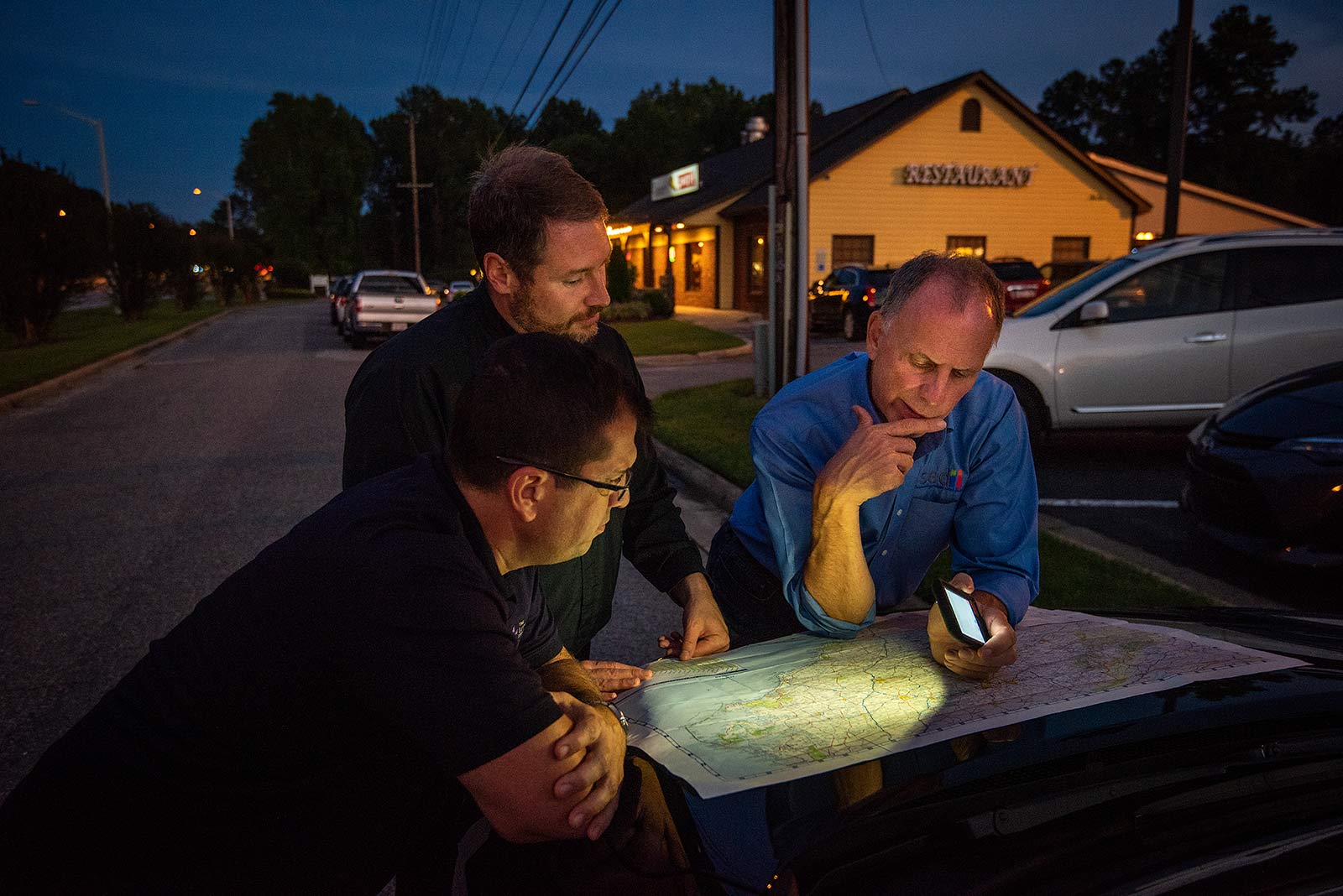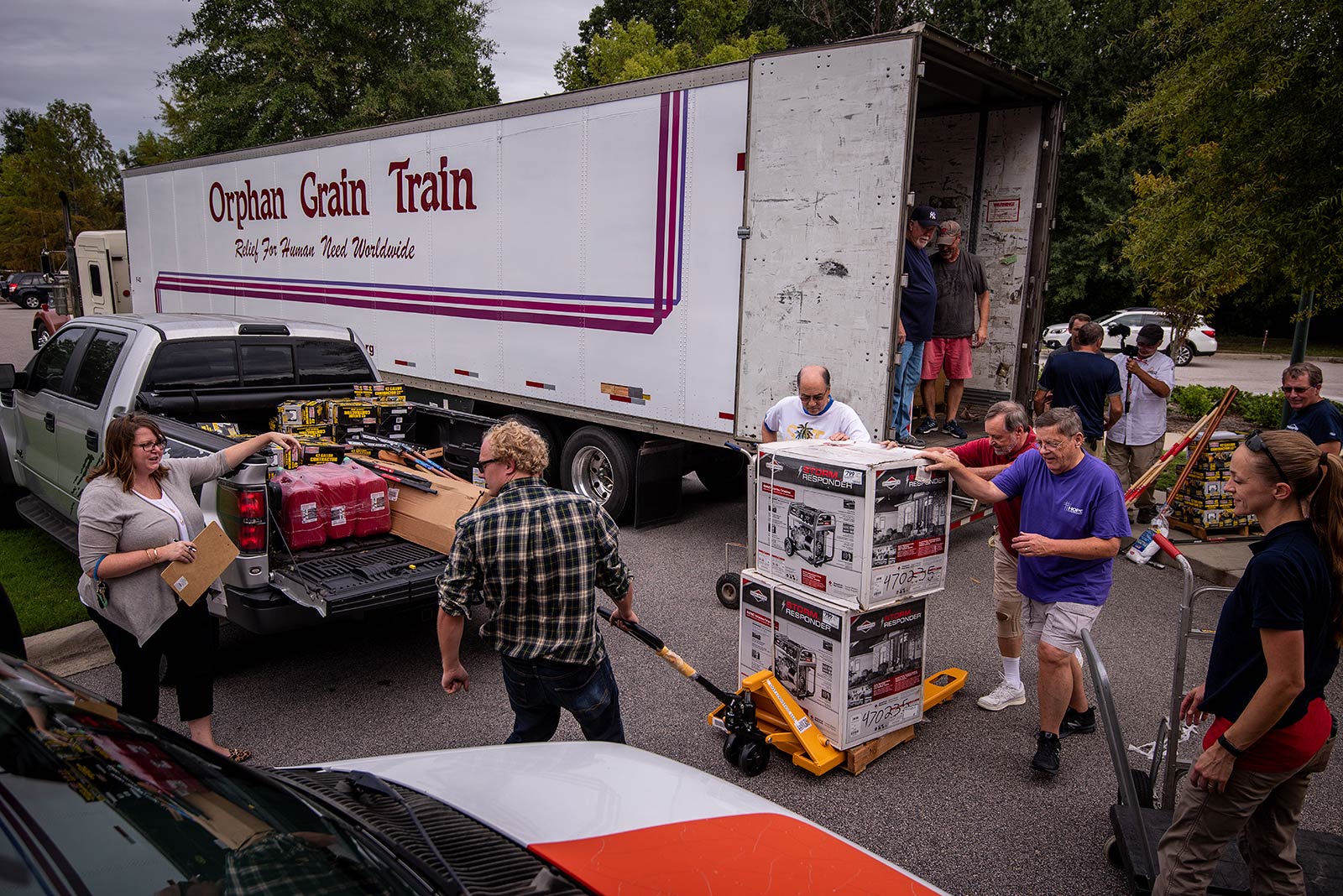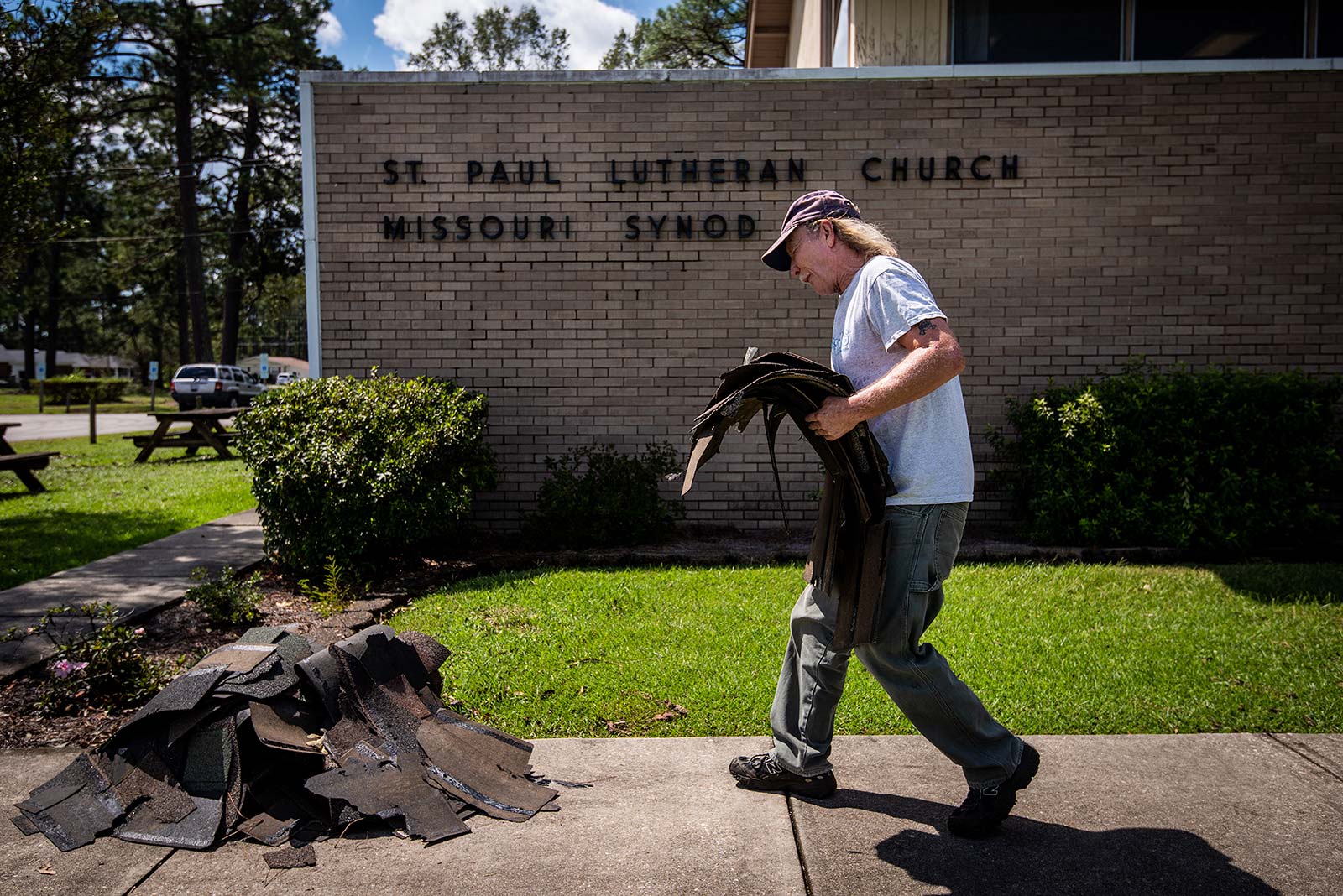Feature
Despite Hurricanes, the Church Still Stands
After hurricanes hit Florida and the Carolinas, The Lutheran Church—Missouri Synod walks together to rebuild lives and restore hope in Jesus’ name.
Hear from people affected by recent hurricanes.
Although hurricanes Florence and Michael dropped out of the news cycle just days after making landfall in the United States, the road to recovery will take months — even years — in the affected areas. LCMS World Relief and Human Care Disaster Response is working with LCMS districts and other partners in the Carolinas and the Florida Panhandle, bringing the love of Christ to church members and their neighbors.
“We always say we’re in for the long haul, we’re going to be there after everyone else has pulled out,” said Deaconess Sally Hiller, the LCMS Southeastern District’s disaster-response coordinator, who is overseeing the response in the Carolinas.
Initial Recovery in the Florida Panhandle
Hurricane Michael made landfall as a Category 4 storm near Mexico Beach, Fla., on Oct. 10, unleashing winds of up to 155 miles per hour on the coastal towns of the Florida Panhandle. Some people evacuated ahead of the storm, but many did not.
“I think the rapid intensification caught a lot of people off guard,” said the Rev. Michael Meyer, manager of Disaster Response.
At Good Shepherd Lutheran Church in Callaway, Fla., the Rev. Randal Ehrichs opened up the church as a shelter for people who did not evacuate. As the winds began blowing, some 85 people — as well as 15 to 20 dogs, cats and other pets — gathered at the church.
“We’ve sheltered here in other hurricanes, so we really didn’t anticipate the kind of storm that Michael was going to be,” Ehrichs said. “We had no idea we were going to have to care for quite that many [people] … but they needed shelter and just started showing up.”
As the storm intensified, the tension inside grew. The cell network went down, and people were no longer able to communicate with their loved ones. To encourage the group, Ehrichs led them in singing hymns and praying the psalms.
Although Good Shepherd suffered significant damage to its roof during the hurricane, everyone inside was OK. But nearby Redemption Lutheran Church (seen in the photo at the top of this story), a small, predominately black congregation in Panama City, was “a total loss,” according to LCMS Southern District President Rev. Eric C. Johnson.

Above: The damaged roof of Good Shepherd Lutheran Church in Callaway. Below: The remains of Living Water Lutheran Church in Mexico Beach. (Aerial photographs by Al Dowbnia)

In Mexico Beach, Living Water Lutheran Church and the home of its pastor, the Rev. David Gieseking, were both destroyed.
Congregations in and around the hardest-hit areas began responding immediately. The Rev. Jay Winters, pastor of University Lutheran Chapel in Tallahassee, Fla., headed into his neighborhood with several members of his congregation to assist neighbors with cutting up fallen trees.
Meanwhile, Synod and district leaders began planning the long-term recovery. Despite damage to the sanctuary roof and youth building, Trinity Lutheran Church, Panama City, became a hub for volunteer teams. In mid-November, Trinity was set up to receive the first 50 volunteers — half from Lutheran Church Charities and half from various congregations around the Synod.
Meyer worked with partners to utilize disaster equipment that was already available. Orphan Grain Train sent a mobile church building, last used in Nebraska, to serve as a temporary home for Redemption, while Camp Restore in New Orleans transferred tools and equipment — originally sent to Baton Rouge for flood relief in 2016 — to Panama City.
Disaster Response also gave a grant of $110,000 to the Southern District to provide for church-worker care and volunteer coordination, as Meyer and others continue to look for ways to offer additional assistance where needed.
“The community is torn up. Not only do people not have places to live, they don’t have a job to go back to. I can’t even imagine. I’ve never been through anything like this before,” Ehrichs said. “But the church, she stands. We had worship on Sunday morning … and the saints truly rejoiced.”
‘Phase 2’ in the Carolinas
Even as this was underway in Florida, long-term recovery continued in the Carolinas after Hurricane Florence dumped a record amount of rain there in mid-September. While Florence’s Category 1 landfall near Wrightsville Beach, N.C., was not as forceful as feared, the storm’s slow journey inland caused catastrophic flooding as rivers overflowed their banks.

St. Paul Lutheran Church in Havelock, N.C., was damaged after the hurricane pummeled the area.
Three LCMS churches sustained significant damage in the storm and the flooding that followed, as did the homes of many congregation members and their neighbors. After the floodwaters rose, many areas were underwater for nine days or more.
“It was impossible for forecasters to figure out what would flood and when,” said the Rev. David Panning, pastor of Holy Lamb Lutheran Church in Myrtle Beach, S.C.
As soon as roads were passable, Disaster Response was on the scene with food, personal-care items, flood buckets and devotional materials. A semitrailer full of tools to help homeowners and volunteers muck out flooded homes was sent from St. Louis.

Above: The Rev. Dr. John Denninger (right), president of the LCMS Southeastern District, plans a route to visit parishes affected by Hurricane Florence with the Rev. Michael Meyer and the Rev. Dr. Ross Johnson of LCMS Disaster Response. Below: Church members and volunteers at Hope Lutheran Church, Wake Forest, N.C., unload a semitrailer filled with Hurricane Florence relief supplies from LCMS Disaster Response.

Several days after the storm hit, Disaster Response leaders met with the Southeastern District to assess the situation. As part of the immediate response, volunteer teams traveled to five coastal cities and cut up fallen trees, removed debris, and cleaned and gutted homes on more than 70 properties.
As the initial cleanup work nears completion, Hiller said that “Phase 2” of relief efforts is underway.
Disaster Response has approved a grant of $209,083 to the Southeastern District for church repairs, worker care, materials and supplies, and the coordination of volunteer efforts moving forward. Hiller said that they plan to rebuild 20 homes. Three have already been completely restored.
An estimated $200,000 more is currently being sent to the region in the form of tools and resources. Four mobile bunkhouses, mobile kitchen and refrigeration units, and a mobile office are being transferred to house, feed and organize volunteers. Many of these resources are being transferred from former disaster sites, and thus are the continued fruits of previous grants from Disaster Response.

David Riser, a Lutheran volunteer from Hickory, N.C., cleans up fallen shingles at St. Paul Lutheran Church, Havelock, N.C.
Aaron Asbury, a firefighter from North Myrtle Beach, received three hours’ notice to vacate his home while on duty a few days after the hurricane. He and his wife saw the floodwaters rising in their backyard as they threw what they could in their car and retreated to safe ground.
“We lost everything,” Asbury said.
Asbury remained in the area to respond to the needs of others while his own home was destroyed. He’s been responding to disasters for 23 years, yet he says this experience has given him a “new, profound respect” for both victims and volunteers.
When Pastor Panning learned of Asbury’s situation, he called the drywall team from Calvary Lutheran Church, Charleston, S.C. The team restored more than just the “physical things” for Asbury. After the hurricane, Asbury said that looters came through many of the affected areas, breaking into homes and garages. Asbury said he saw the “worst of humanity” in those days. But when the team of volunteers came to help him out for a week, “the best of humanity won out.”
Thanks be to Christ, who stilled the waves and silenced the wind with His Word, that even when the wind howls, the rivers rise and church buildings are swept away, the Synod walks together to rebuild lives and restore hope in Jesus’ name.
Learn More
- About the Synod’s Disaster Response: lcms.org/disaster
- Support disaster-response efforts: lcms.org/givenow/disaster
Pray with Us
Lord of the wind and waves, who stills with an almighty voice, be with those whose lives are stirred by storms. As people work to recover from damage and the effects of recent hurricanes and floods, may Your Church continue to love and bring the light of Christ to all. On days when we are kept safe, let us praise You. When in danger, let us hope in You. When disaster befalls us, let our faith not fail, for Jesus is our refuge and strength. Inspire us with Your Spirit, that we might pray for daily bread all our days and trust in You alone as the Provider, through Jesus Christ, our Lord. Amen.
Share Jesus with the World
Your generosity today makes possible your Synod’s witness and mercy efforts both at home and abroad.
Give now
Are you looking to direct your gifts for work that’s more specific?
Visit the LCMS online ministry and mission catalog to find those opportunities most meaningful to you!
Don’t see what you’re looking for?
Contact LCMS Mission Advancement at 888-930-4438 or mission.advancement@lcms.org to talk about all the options available.

